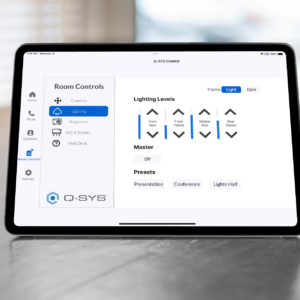Extended reality is poised to cause huge shifts in the fashion industry. Not only does it streamline the shopping process and reduce waste, but it has the potential to make shopping easier by providing opportunities for virtual try-on, on-demand customization, and interactive campaigns. Technology like Lalaland.ai allows you to customize your 3D model to your ethnicity, skin color, height, weight, and body shape so you can get a more accurate idea of how a piece of clothing will fit your body.
With this technology comes the potential to, for example, scan a tag’s QR code and see how the garment looks on your digital twin. This could reduce the need to try on clothes, prevent damage, lower the rate of returns, and reduce waste. There’s also the potential to buy not just physical clothes, but also a digital version for your avatar to wear in the virtual world.
There are other ways that this technology could reduce waste. Dress X is a retail platform targeted at influencers that offers virtual garments created by contemporary brands. When customers purchase a digital garment, it can then be overlaid on a photo of their choice. Dubbed “clothing for content,” the goal is to reduce waste in the fashion industry.
To learn more about the potential of XR in fashion, XR Star host Amelia Kallman sat down with the head of the Fashion Innovation Agency, Matthew Drinkwater.
Virtual Reality’s Current Role in Fashion
The Fashion Innovation Agency at the London College of Fashion works with young and emerging designers, technology companies, and luxury brands to bridge the fashion and technology industries. They work in three main areas: changing the way designers create, show, and retail their collections. It’s a traditional fashion designer business model infused with new technology.
Drinkwater points out that students at the college have been experimenting with showcasing their designs within virtual reality. As this technology has become more popular, we’ve seen more examples of fashion shows being delivered in a more interesting way. At the most recent New York Fashion Week, Tommy Hilfiger used Roblox to stream their runway show and allow users to purchase products immediately. Other brands like Gucci, Ralph Lauren, and Burberry have also partnered with Roblox.
While these examples are interesting, Drinkwater says that they also reveal the divide in the fashion industry: there’s a desire to exist in the metaverse, but not an understanding of how to do it, or how to enhance what might be there already. What’s out there currently is mainly driven by marketing and PR rather than structural change that will encourage digital asset creation.
How AI Influences Fashion
Virtual reality and extended reality isn’t the only sector of technology that’s changing fashion. Artificial intelligence is also impacting and supporting the industry.
In the past, Drinkwater explains, a lot of the fashion industry relied on gut instinct when predicting retail trends. AI could be used to alter the operational side of things by tuning in to real-time demographics. This could lead to stores delivering more intelligent fast fashion and lower stock levels.
AI data could also create a more sustainable, sensible, and intelligence-driven retail industry on the creative side. Tools like Midjourney and Stable Diffusion allow users to create AI-generated art from a few keywords. There’s the potential to use tools like this to generate new garments. While it’s hard to say exactly what the progression of fashion AI will look like, it’s almost certain they’ll change the future of creative fashion.
The Future of Virtual Fashion
Drinkwater points out that we’ve already seen AI-generated clothing lines, and he expects them to start seeping into mainstream culture. The purpose of the metaverse is to blur our physical world with digital content. Drinkwater believes these tools will give creatives more control over their digital content and give customers a more immersive experience.
While the future is promising for virtual fashion, there’s also promise for smart, digitally-enhanced fashion. Wearable technology like smartwatches has had a huge impact on the health and wellbeing sector. Drinkwater explains that when it comes to the future of wearable technology, there’s a lot to think about. Environmental issues with smart technology remain problematic, though projects like Claire Danes’s light-up Zac Posen gown and Studio XO’s Tinkerbell dress are exciting.
When it comes to the future of technology and fashion, Drinkwater explains that virtual fashion could not only reduce waste but increase inclusiveness and accessibility. The fashion industry is typically an expensive one to break into, and virtual fashion makes it easier for anyone to get involved.
Drinkwater hopes that this technology can help shift designer and consumer behavior. Further, he’s hopeful we can utilize these digital tools to transform communication, travel, and engagement. The fashion industry has the opportunity to be a trailblazer, so long as it’s done right.
Check out our podcast XR Star, hosted by Amelia Kallman, and listen to the full episode here









